Biodiversity: Vulnerable richness
The exhibition "Biodiversity: Vulnerable Richness" at ETH Zurich highlighted the biodiversity crisis through fascinating insect and plant specimens, each accompanied by a unique story that emphasized why "to know is to care".
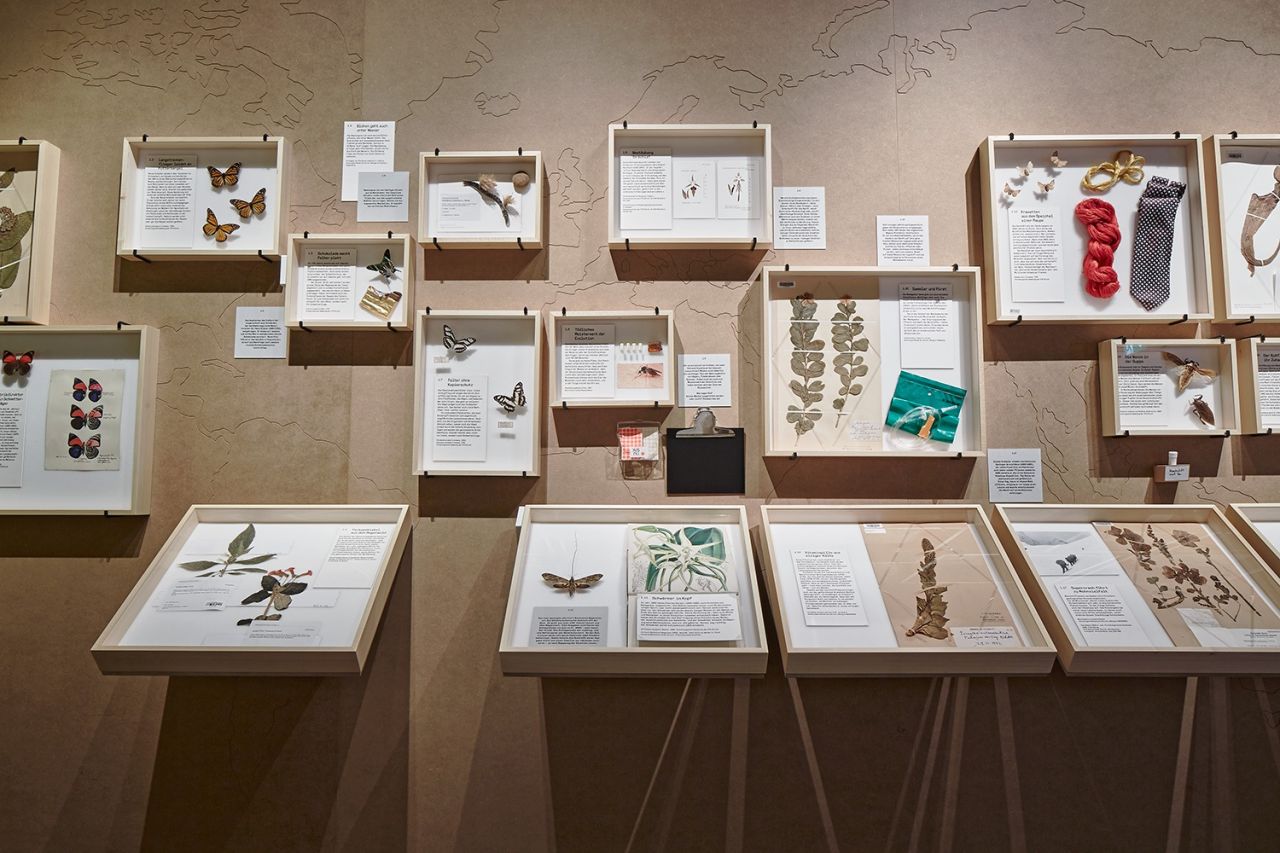
Exhibition at the new exhibition space "extract" at ETH main building. Image: © Agnese Quadri
Over the past 200 years, the human population has surged from one to eight billion, leading to habitat destruction, industrial farming, and pollution. These processes are driving a global loss of biodiversity, threatening the foundations of our survival.
Striving to illustrate both the beauty of biodiversity and its alarming decline, the exhibition “Biodiversity: Vulnerable Richness” was held from August 25, 2023, to July 14, 2024, at “extract”, the new exhibition space of the Collections and Archives in the main building of ETH Zurich. Curated by Dr. Michael Greeff and Dr. Alessia Guggisberg, with curatorial support from Atlant Bieri, the exhibition featured a selection of insects and plants from the rich natural history collections of ETH Zurich and the University of Zurich, each selected to highlight significant stories of natural history and biodiversity.
The exhibition invited visitors to explore the often-overlooked consequences of globalization, habitat loss, and scientific discoveries on biodiversity. Factors such as global warming, deforestation, invasive species, air and water pollution, and land use changes, all contributing to the decline of biodiversity, were themes central to the exhibition’s narrative.
To view this content, you must accept marketing and third-party cookies.
Decaying wood: A lifeline for stag beetles
Switzerland’s stag beetle population is in decline, primarily due to habitat loss. These beetles depend on old, decaying oak wood for reproduction, as their larvae feed on decomposing wood for several years before emerging as adults. However, unsustainable forest management has drastically reduced old-growth oak forests, depriving stag beetles of the resources they need to survive. Without sufficient rotting wood, fewer larvae can mature, and the population shrinks. This story illustrates the fragile balance between insects and their habitats—when key elements of an ecosystem disappear, so do the species that depend on them.
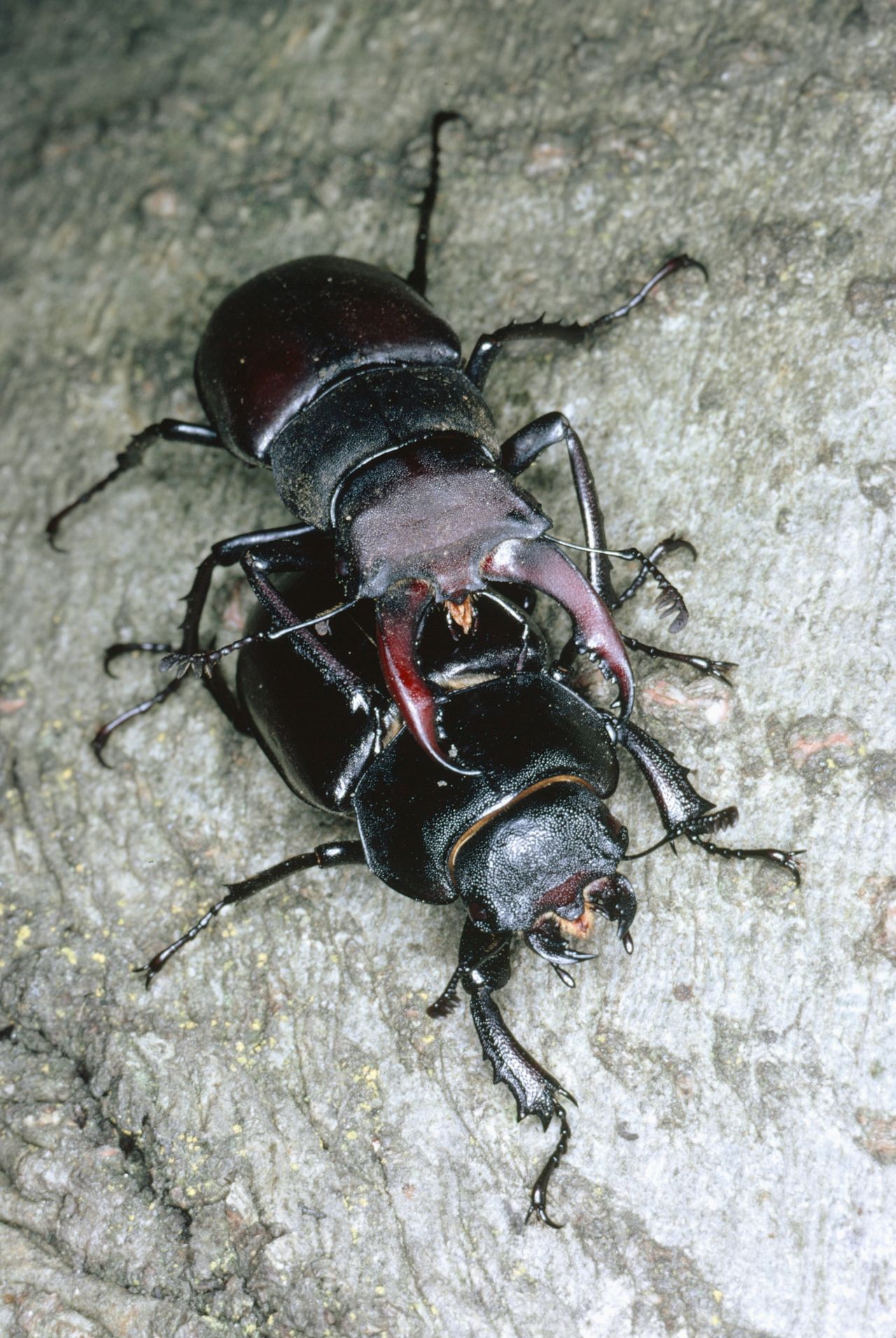
Lucanus cervus male on top of a female. The difference in appearance between the two sexes is known as sexual dimorphism. Image: Entomologie/Botanik, ETH Zurich/photographer: Albert Krebs, CC license
Chocolate love eradicated a moth species
Once, swarms of stunning Urania moths filled Jamaica’s morning skies—until deforestation wiped them out by 1895. As rainforests made way for cocoa plantations, the moth’s host plant vanished, sealing its fate. Ironically, its discoverer, Sir Hans Sloane, helped drive demand for Jamaican chocolate after introducing hot cocoa to England.

Snapshot from the exhibition showing the moth Urania sloanus from the ETH Zurich Entomological Collection. Image: © Kaan Mika
Hero or villain?
In North America, the common milkweed is essential for monarch butterfly caterpillars and a vital food source for 450 insect species. Rich in toxins, it shaped resilient ecosystems over millions of years. But in Europe, where it was introduced by humans in the 18th century, it has spread uncontrollably, displacing native plants – and has landed on the blacklist of invasive species.
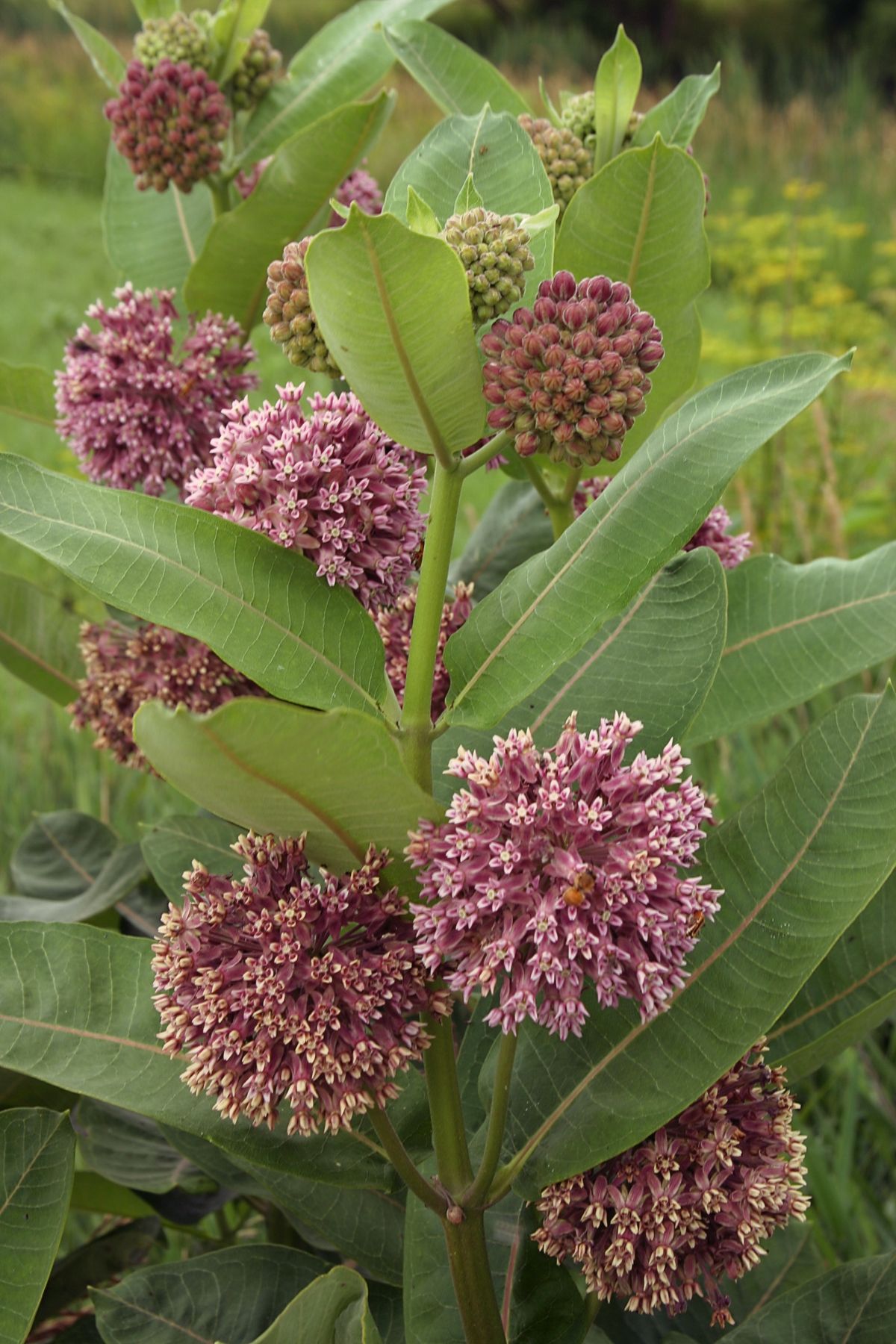
A common milkweed plant (Asclepias syriaca), also known as butterfly flower. Image: Wikimedia Commons/Amos Oliver Doyle, CC license
A paradoxical insect
The violet carpenter bee struggles with our desire for order. Rotting wood, which many remove from their gardens, is precisely what this bee needs to build its nesting tubes. Despite the decline in deadwood, the carpenter bee is expanding its range in Switzerland—thanks to rising temperatures driven by climate change. Global warming also benefits other heat-loving species, including reptiles and certain butterfly species.
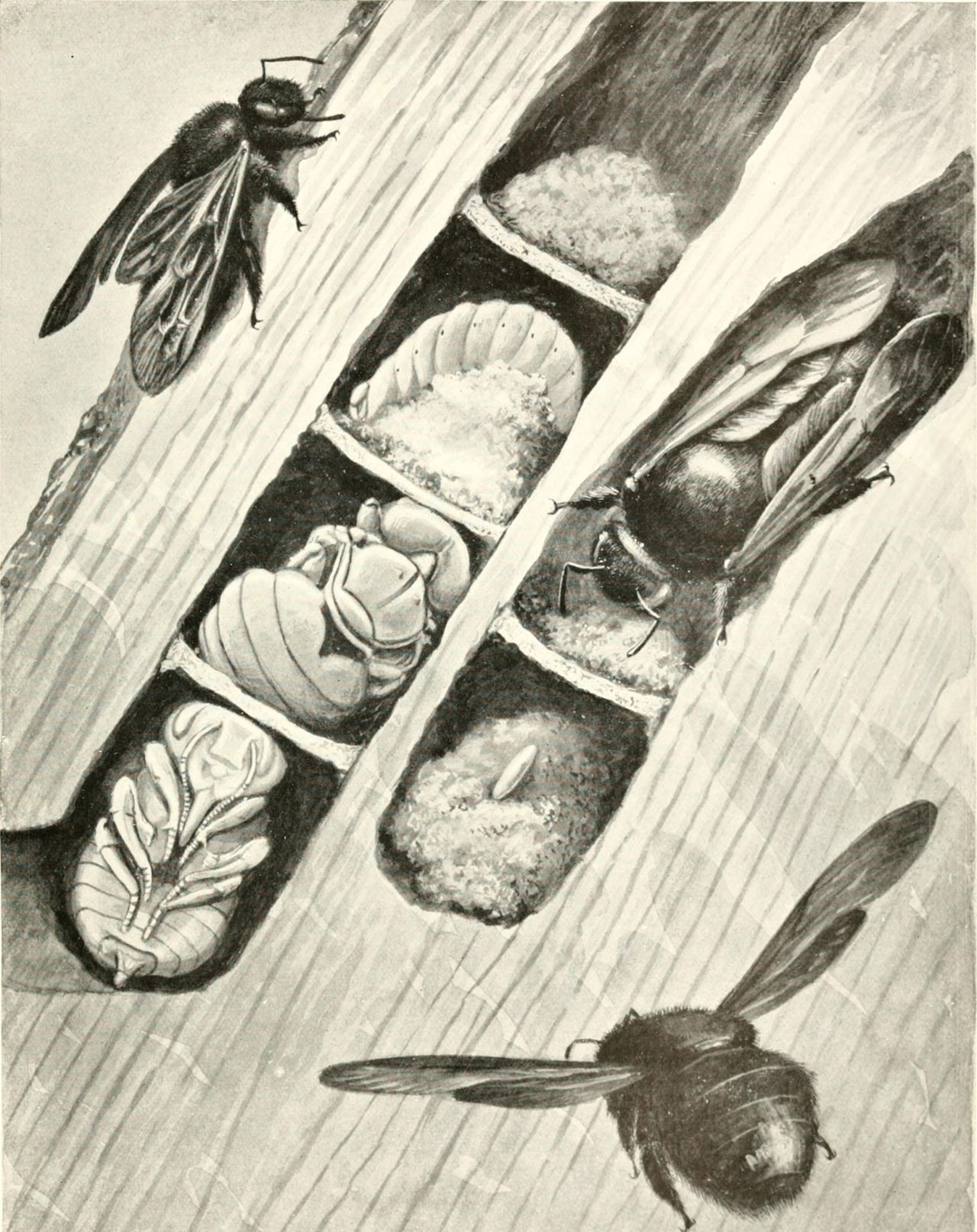
An illustration of the carpenter bee (Xylocopa violacea) nest carved in dead wood. Image: Marvels of insect life; a popular account of structure and habit 1916 by Edward Step, CC License
Unseen biodiversity
Most insect species go largely unnoticed for much of their lives. For example, many butterfly caterpillars spend most of their time hidden from predators in the soil or among the leaves of a tree. Still, many animals, such as birds and reptiles, are far better than we are at detecting these secretive creatures, relying on them as an essential food source.
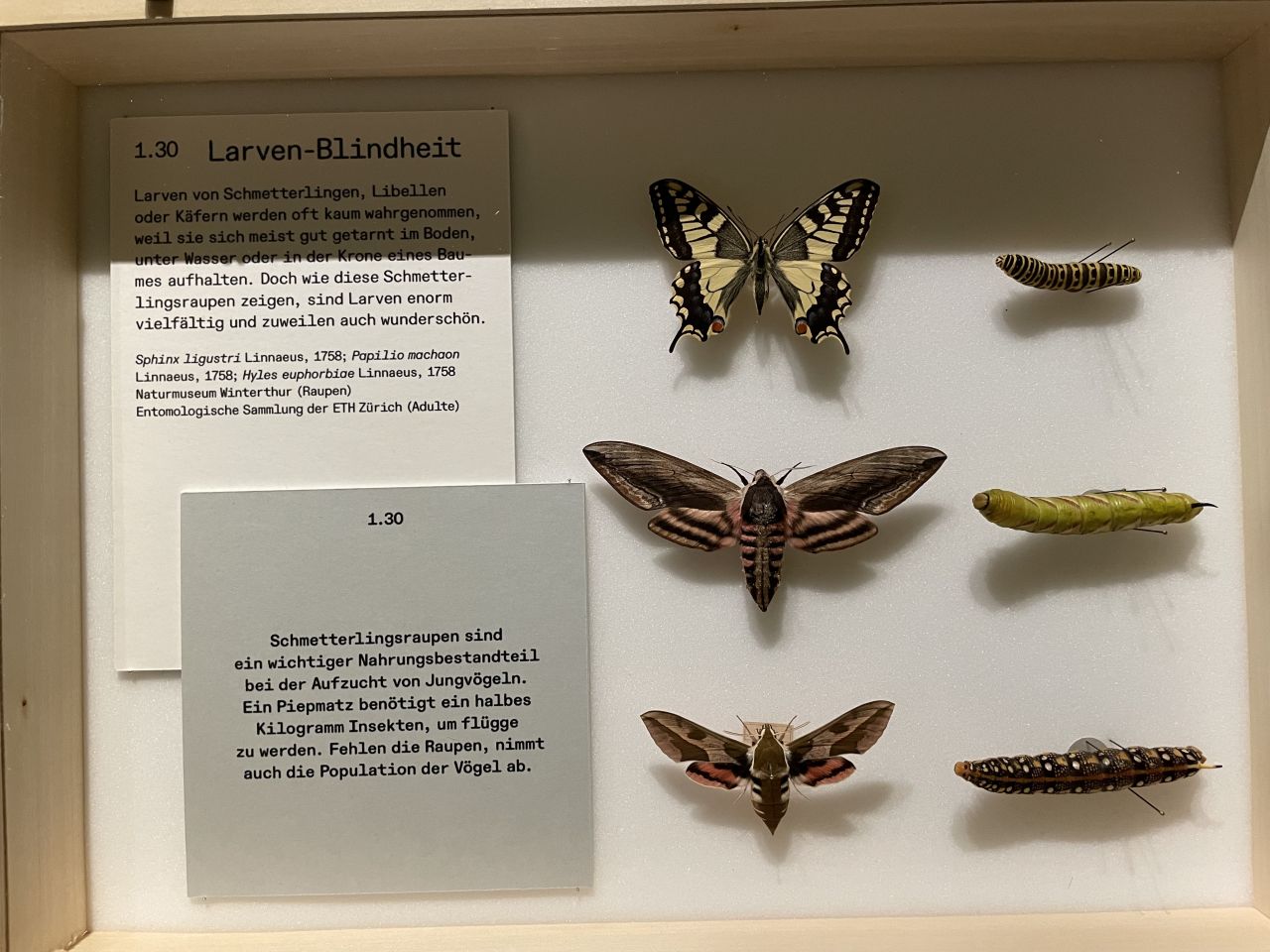
Adult and larval forms of three insect species: Sphinx ligustri, Popilio machaon and Hyles euphorbiae. Image: © Kaan Mika
The more we learn, the more we care
Biodiversity loss is one of the greatest threats to our future, but what specifically is within our power to counteract this danger? Simple actions like planting wildflowers or reducing meat consumption can make a difference. But larger, systemic issues – deforestation, invasive species, and pollution – require urgent global action.
Understanding and appreciating biodiversity is the crucial first step – only then will we be inspired to protect it.
